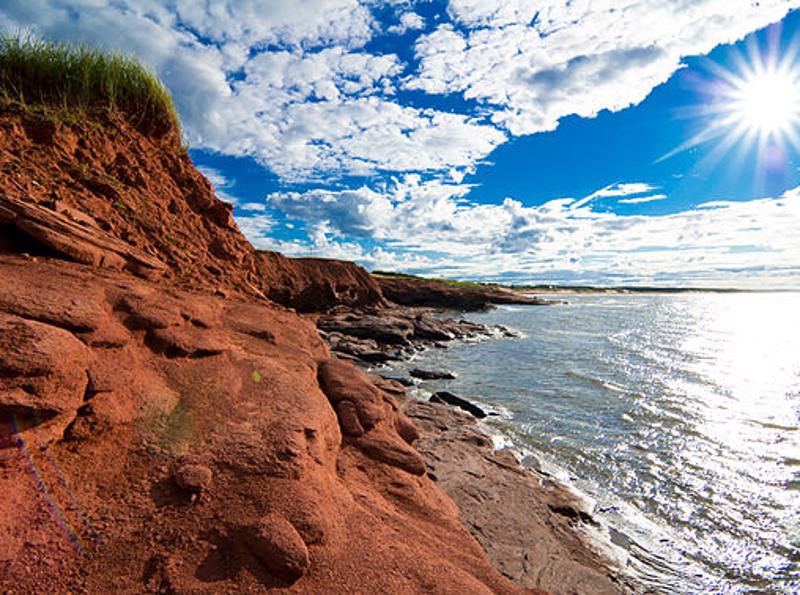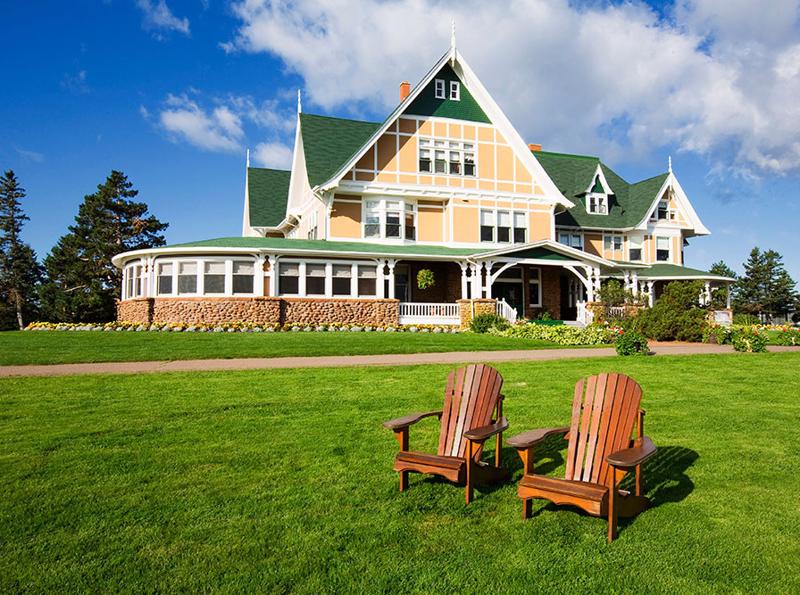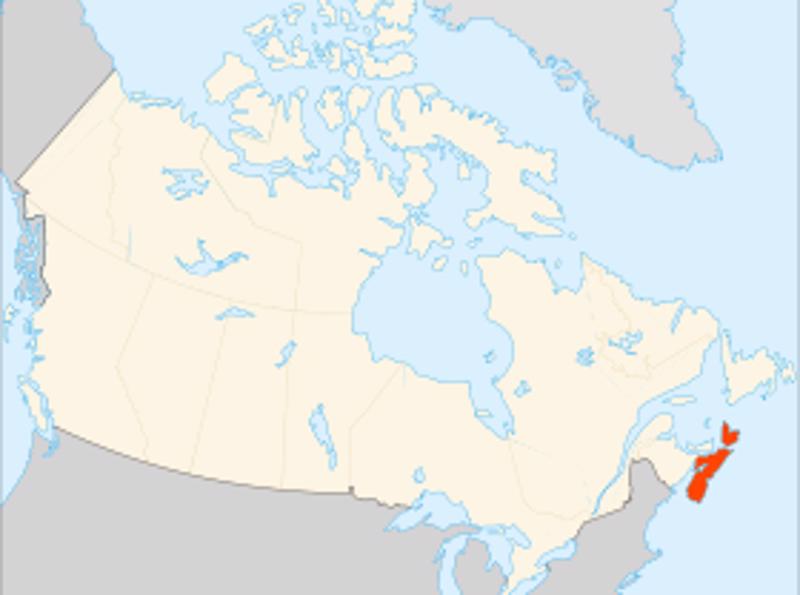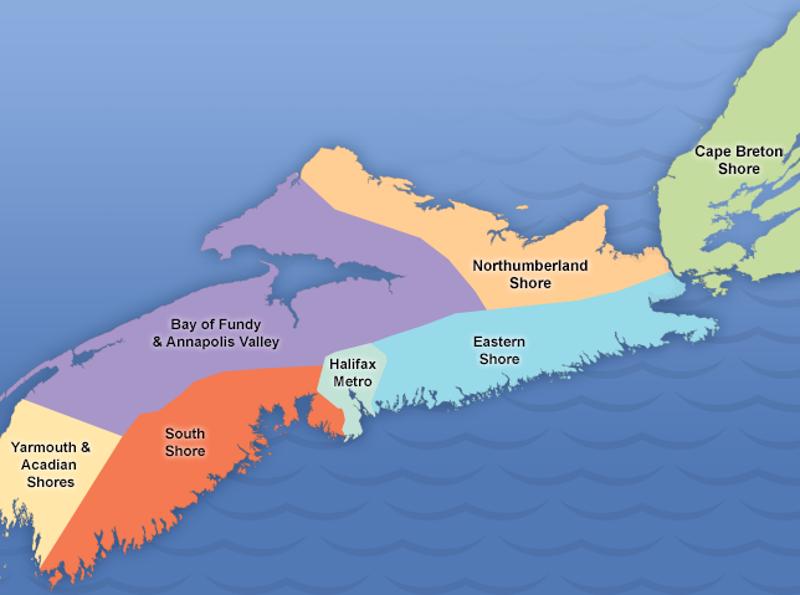2018 Adventures
Today is our last day on PEI and we are going to do a bit more exploration in the south and north parts of the island. We decided to head over to Wood Island to where the ferry is located. We want to see how long it takes to get there, as well as, do some exploration of the area while we are there. Tomorrow we will be getting up pretty early to head to the ferry, so today is our only day to explore the area a bit.
brenda stanger
104 chapters
16 Apr 2020
Prince Edward Island - More exploration
North and South Road Exploration
Today is our last day on PEI and we are going to do a bit more exploration in the south and north parts of the island. We decided to head over to Wood Island to where the ferry is located. We want to see how long it takes to get there, as well as, do some exploration of the area while we are there. Tomorrow we will be getting up pretty early to head to the ferry, so today is our only day to explore the area a bit.



Wood Islands is a rural farming and fishing community located in southeastern Queens County on the Northumberland Strait. It takes its name from several small forested islands, located several hundred metres offshore in the Northumberland Strait.
The 'European' settlement of Wood Islands began in 1803, but saw its most noted arrivals in 1807 with the arrival, after wintering in Pinette, of a large party of Scottish settlers from The Spencer.
The southwestern shore of the lagoon forming Wood Islands Harbour is also the southernmost point in Prince Edward Island. During its session of 1874, the Canadian Parliament appropriated $6,000 for a lighthouse at Wood Islands, as an aid of marine traffic in the Strait and for fishers in and around Wood Islands harbour. It is the second

oldest lighthouse on PEI, with an attached dwelling and tower of this style. The difficult approach to the lighthouse meant that the lighthouse keepers had few visitors before the present road was built in the late 1930s.
After exploration of the lighthouse and park space, we headed into the ferry building to warm up with a warm bowl of soup and biscuit. Delicious and only $4.00/bowl for a large bowl.
From Wood Island we headed back up to the north coast to the Prince Edward Island Provincial Park and Dalvay by the Sea National Historical Site.
Situated along the island's north shore, fronting the Gulf of St. Lawrence, the park measures approximately 60 km in length and

ranges from several hundred metres to several kilometres in width. Established in 1937, the park's mandate includes the protection of many broad sand beaches, sand dunes and both freshwater wetlands and saltmarshes. The park's protected beaches provide nesting habitat for the endangered piping plover (the piping plover is a small sand-colored, sparrow-sized shorebird that nests and feeds along coastal sand and gravel beaches in North America), the park has been designated a Canadian Important Bird Area.
Dalvay-by-the-Sea, once a summer home owned by a wealthy oil tycoon, is an exquisite Queen Anne Revival-style estate adorned with gables, dormers and bay windows. In 1895, a wealthy Scots-born American industrialist, Alexander Macdonald, discovered the area while on vacation on Prince Edward Island. He and his wife became so enamored of the area that Macdonald purchased 120 acres of land and commissioned a house to be built here. The house was completed in 1896. Macdonald named it Dalvay-by-the-Sea after his boyhood home in Scotland. It has changed owners many times over the years, being bought and sold as a result of financial hardships, until the day it was sold in 1938 the the Government of Canada to become a historical landmark for visitors to enjoy. Since then, the house has been operated as a hotel by operators under a leased concession from Parks Canada. There are 26 guest rooms, furnished in period

antiques. There are private baths in each room.
Dalvay-by-the-Sea overlooks Dalvay Lake and the ocean where seabirds spiral above waves and beaches. You don't have to be a hotel guest to explore the grand wood-panelled interior or settle into a chair in front of a sandstone fireplace. The hotel is a popular attraction for visitors to Prince Edward Island and has been featured in the Anne of Green Gables movies. The venue also served as the fictional White Sands Hotel in the Canadian Road to Avonlea television series.
Prince William, Duke of Cambridge, and Catherine, Duchess of Cambridge visited Dalvay-by-the-Sea during their 2011 royal tour of Canada. William took part in training exercises with the Canadian Forces, executing a "water bird" emergency landing procedure over Dalvay Lake in a Sea King helicopter.
We decided to take in the beautiful scenery and stay for lunch in the grand MacMilliam dinning room that overlooks the lake. It is a round building on the side of the hotel that has views in every direction. Rick had the lobster roll and I had the fish and chips. Probably the best lobster roll yet!
We took in a nice stroll down the boardwalk in the provincial park after lunch. The beach stretches for miles and the rolling sand dunes give the area the relaxing feel. Unfortunately dogs are not allowed on the park beaches. With such large beaches a family could relax at the seaside and have their own little piece of beach for the day and not feel crowded in the summer months. A place definitely worth the trip in the warm summer months.
PEI is such a different island in comparison to New Brunswick. It is bustling with tourism and agriculture. The rolling hillsides are green and lush and there is a picture perfect moment at every turn. The beaches are made up of soft sand and stretch for miles in every direction. Not to mention the number of artists and potters that are on the island. A person could spend a whole week or more on PEI and not see everything there is to see. The island is not very big, but it has many little side roads that a person could travel on and never travel the same road twice. It is a place I could see people coming back to time and time again. A must see place for anyone who has never been.
Next stop.. Nova Scotia.



1.
Year of Travel
2.
Sosua - Dominican Republic
3.
Our Adventures So Far...
4.
Beach Life
5.
Our Favourite Restaurants in Sosua
6.
Fun with Friends
7.
Sosua Continued
8.
Sun, Surf and Sand
9.
Samana Peninsula
10.
Sosua Highlights
11.
USA Road Trip
12.
Texas
13.
Texas
14.
Louisiana - NOLA
15.
Louisiana - NOLA
16.
Louisiana - NOLA
17.
Alabama
18.
Alabama to Tennesse
19.
Tennesse - Nashville
20.
Tennesse - Nashville
21.
Tennesse - Nashville
22.
Tennesse - Memphis
23.
Tennesse - Memphis
24.
Tennesse - Memphis
25.
Summer at Home
26.
Westcoast Adventures
27.
Europe
28.
Europe - Budapest
29.
Europe - Budapest
30.
Europe - Vienna
31.
Europe - Vienna
32.
Europe - Vienna
33.
Europe - Prague
34.
Europe - Prague
35.
Europe - Prague
36.
Europe - Berlin
37.
Europe - Berlin
38.
Europe - Berlin
39.
Europe - Salzburg
40.
Europe - Salzburg
41.
Europe - Salzburg
42.
Europe - Salzburg
43.
Europe - Salzburg
44.
Europe - Innsbruck
45.
Europe - Innsbruck
46.
Europe - Bad Ragaz
47.
Europe - Bad Ragaz
48.
Europe - Lindau
49.
Europe - Lindau
50.
Europe - Fussen
51.
Europe - Fussen
52.
Europe - Freising and Munich
53.
San Francisco
54.
San Francisco
55.
San Francisco
56.
San Francisco
57.
San Francisco
58.
San Francisco
59.
Canada Road Trip
60.
On the Road to Ontario
61.
Ontario - Thunderbay
62.
Ontario - Thunderbay
63.
Ontario - Thunderbay
64.
Ontario - Toronto
65.
Ontario - Ottawa
66.
Ontario - Ottawa
67.
Quebec - Montreal
68.
Quebec - Montreal
69.
Quebec - Montreal
70.
Quebec - Quebec City
71.
Quebec - Quebec City
72.
Quebec - Sainte Flavie
73.
New Brunswick - Bathurst
74.
New Brunswick - Shediac
75.
New Brunswick - Shediac
76.
Prince Edward Island - Charlottetown
77.
Prince Edward Island - Road trip
78.
Prince Edward Island - Charlottetown
79.
Prince Edward Island - More exploration
80.
Nova Scotia - Halifax
81.
Nova Scotia - Halifax
82.
Nova Scotia - Halifax
83.
Nova Scotia - Sydney
84.
Newfoundland - Channel-Port
85.
Newfoundland - Rocky Harbour
86.
Newfoundland - Rocky Harbour
87.
Newfoundland - St. John's
88.
Newfoundland - St. John's
89.
Newfoundland - St. John's
90.
Newfoundland - St. John's
91.
Newfoundland - St. John's
92.
Newfoundland - Travelling
93.
Nova Scotia - Sydney
94.
New Brunswick - Saint John
95.
Maine - Portland
96.
Massachessets - Cape Cod via Boston
97.
Massachusetts - Cape Cod
98.
Massachusetts - Cape Cod
99.
Pennsylvania - Clearfield
100.
Illinois - Chicago
101.
Illinois - Chicago
102.
Illinois - Chicago
103.
Heading Home
104.
Our Year at a Glance